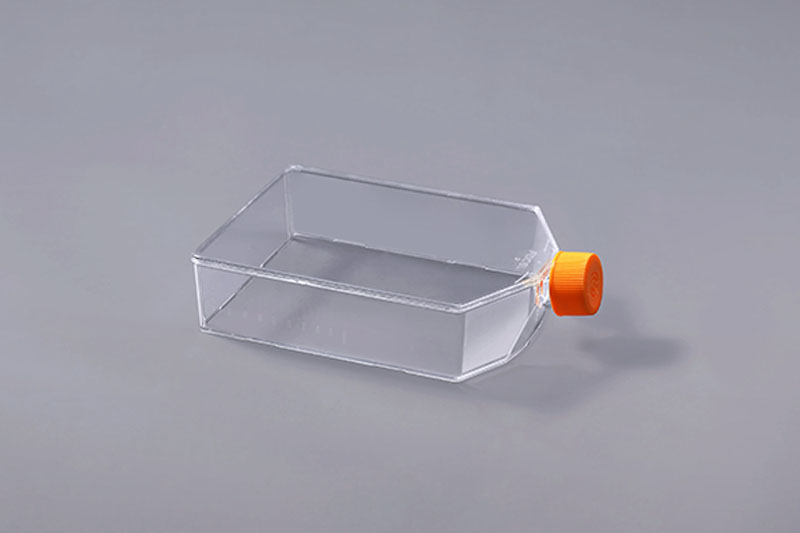The cell culture flasks are a kind of consumable used in cell culture experiments. It can not only be used for cell recovery and small-scale cell expansion, but also for the expansion of adherent cells. With the continuous improvement and perfection of processing technology, these consumables are also constantly innovating to better meet the needs of researchers.
1. From the perspective of the culture area, the cell culture flasks are available in 25cm2, 75cm2, 175cm2, 225cm2 and other specifications, which can meet the needs of various medium and small-scale cell cultures.
2. Bottleneck design: The bottleneck of this consumable adopts a torticollis design, which is convenient for the import and export of the culture solution. The bottleneck is relatively wide and there is no dead angle, which is convenient for the pipette and the cell scraper to contact the growth surface.
3. Two types of bottle caps: two types of vent caps and sealing caps, which can be used in different culture environments. The vent caps can be used in CO2 environments, and the sealing caps can be used in ordinary incubators and greenhouses that do not contain carbon dioxide.
4. No residue: The bottom of the bottle is designed with a circular arc, which is convenient to pour out the culture medium or pancreatin, and there is no residue. The stacking design is not easy to slip off, easy to stack, and convenient to carry.
5. Convenient to record: There are scale lines on both sides of the bottle, and a frosted writing area is sprayed to facilitate researchers to mark information.
In addition, the surface of the cell culture flasks is generally modified by TC to better adapt to the growth and reproduction of adherent cells. Pharmaceutical companies or research institutions should pay attention to these factors when purchasing, in order to choose more suitable consumables.
The FAI climbed 5.9 percent year-on-year in the first 11 months of 2018, quickening from the 5.7-percent growth in Jan-Oct, the National Bureau of Statistics (NBS) said Friday in an online statement.
The key indicator of investment, dubbed a major growth driver, hit the bottom in August and has since started to rebound steadily.
In the face of emerging economic challenges home and abroad, China has stepped up efforts to stabilize investment, in particular rolling out measures to motivate private investors and channel funds into infrastructure.
Friday's data showed private investment, accounting for more than 60 percent of the total FAI, expanded by a brisk 8.7 percent.
NBS spokesperson Mao Shengyong said funds into weak economic links registered rapid increases as investment in environmental protection and agriculture jumped 42 percent and 12.5 percent respectively, much faster than the average.
In breakdown, investment in high-tech and equipment manufacturing remained vigorous with 16.1-percent and 11.6-percent increases respectively in the first 11 months. Infrastructure investment gained 3.7 percent, staying flat. Investment in property development rose 9.7 percent, also unchanged.
 English
English



















































